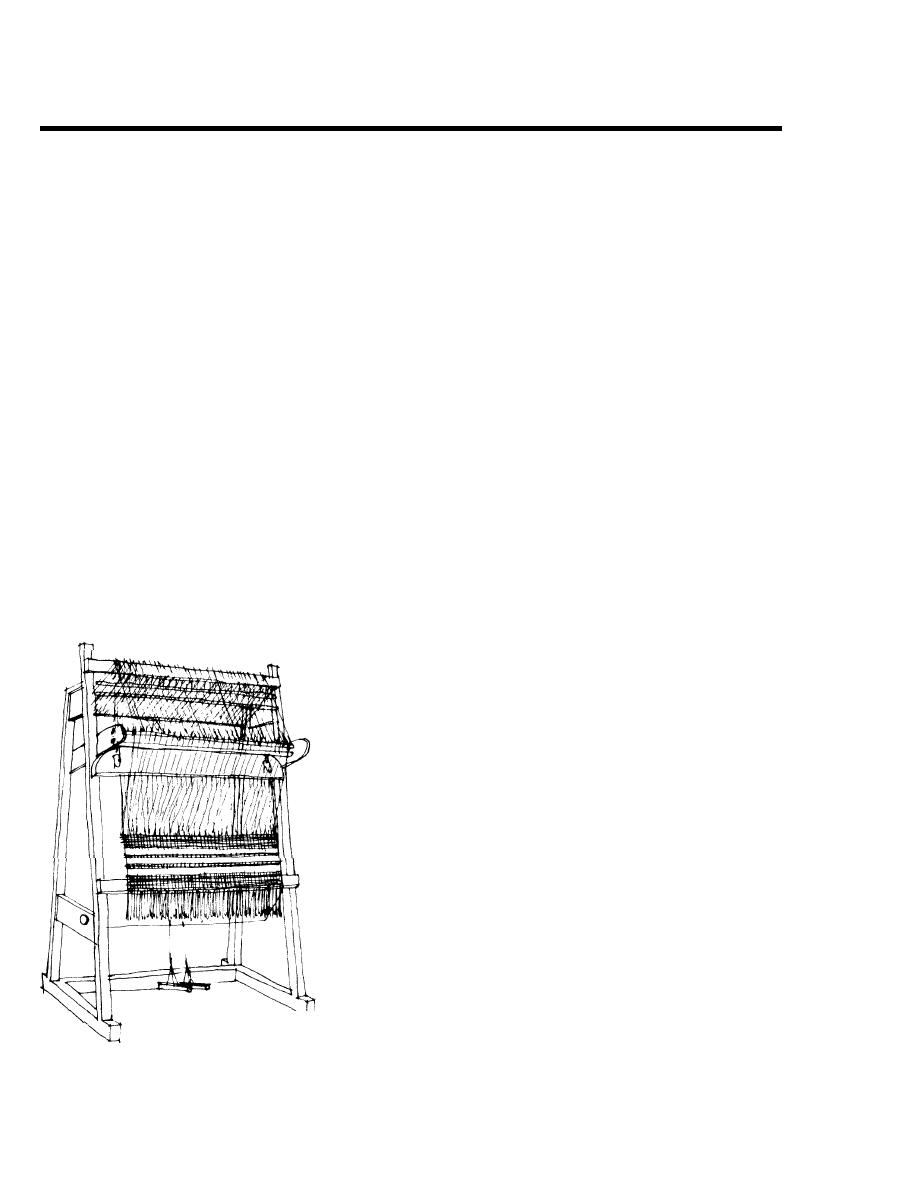
Page 34
DG 1110-3-124
August 1976
a. A C T I V I T I E S
3-6 Weaving,
This program covers a wide variety of activities. Loom
Textiles and General
weaving, tapestry work, batik, tie-dye, macrame, soft
sculpture, banners, fabric collages, needlepoint, stitchery,
and sewing are all part of this general category. In addi-
Handicrafts
tion, leather craft, with its braiding, lacing, sewing and
tooling, and other general crafts such as bookbinding,
basketry, candle making and puppetry fall within the gen-
eral handicrafts nomenclature.
b. PARTICIPANTS
A 20,650 square foot center would normally provide
space for approximately 40 participants and two staff
members to use the facilities at any one time.
c.
PHYSICAL
REQUIREMENTS
The general work area should be flexible to allow for fre-
quently changing needs. Some activities will require a
permanent setup, such as floor looms and sewing
machines, and these may be installed in alcoves. The pre-
dominant arrangement, however, will be one of movable
work tables and counters which can be adapted for a
variety of crafts. Storage should be provided within a
common room.
d.
RECOMMENDED
SPACE
ALLOCATIONS
For a center of 20,650 square feet, approximately 1,700
square feet should be allocated to weaving, textiles and
general handicrafts.
1,000 square feet
Work Area
400 square feet
Weaving Area
300 square feet
Storage Area
e. RELATED AREAS
Office
Library/Lounge/Exhibit
Area
Studio/Classroom/Gallery
f. FURNISHINGS
EQUIPMENT
The basic furnishings consist of workbenches, tables, and
stools. Much of the specialized equipment is portable.
Foot powered looms occupy considerable floor space
when in operation but may be moved together and stored
when not in use. Table looms, rug looms, and tapestry
frames can be utilized on table tops and stored when not


 Previous Page
Previous Page
